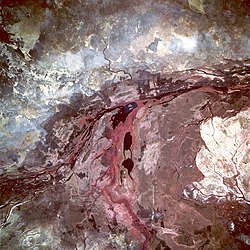Attractions

There is no UNESCO recognized World Heritage Site in South Sudan. However, South Sudan has 14 national parks/protected areas and the world's second largest animal migration. According to the Times of Malta, "South Sudan has the world's second largest animal migration, an epic migration of the antelopes, but there is not a single tourist to see it". [1] Boma National Park is as big as Rwanda. [1] Other major parks includes, Bandingilo National Park, Lantoto National Park, Nimule National Park, Shambe National Park, Southern National Park, etc. There are also several game reserves which includes Ez Zeraf Game Reserve, Ashana Game Reserve, Bengangai Game Reserve, Bire Kpatuos Game Reserve, Chelkou Game Reserve, Fanyikang Game Reserve, Juba Game Reserve, Kidepo Game Reserve, Mbarizunga Game Reserve, and Numatina Game Reserve among others.
South Sudan is also known for its vast swamp region of the Sudd, an area 320 km wide and 400 km long. It is known as one of the largest wetlands in the world and nearly 400 species of birds can be found there. [8] [9] [10]